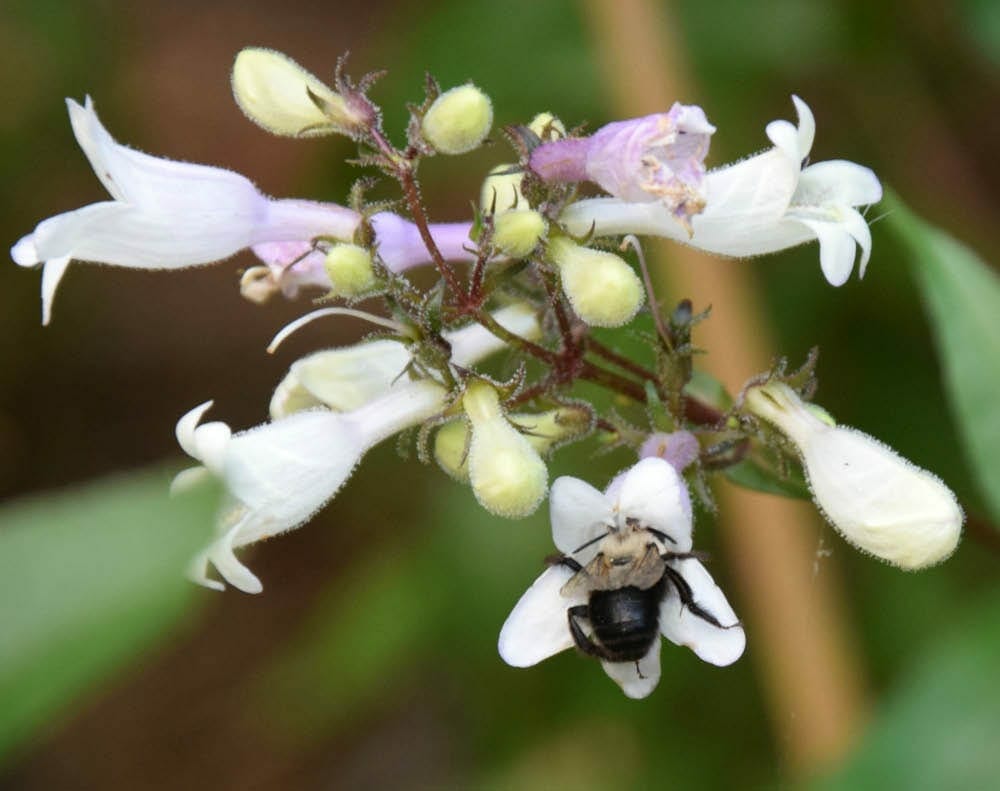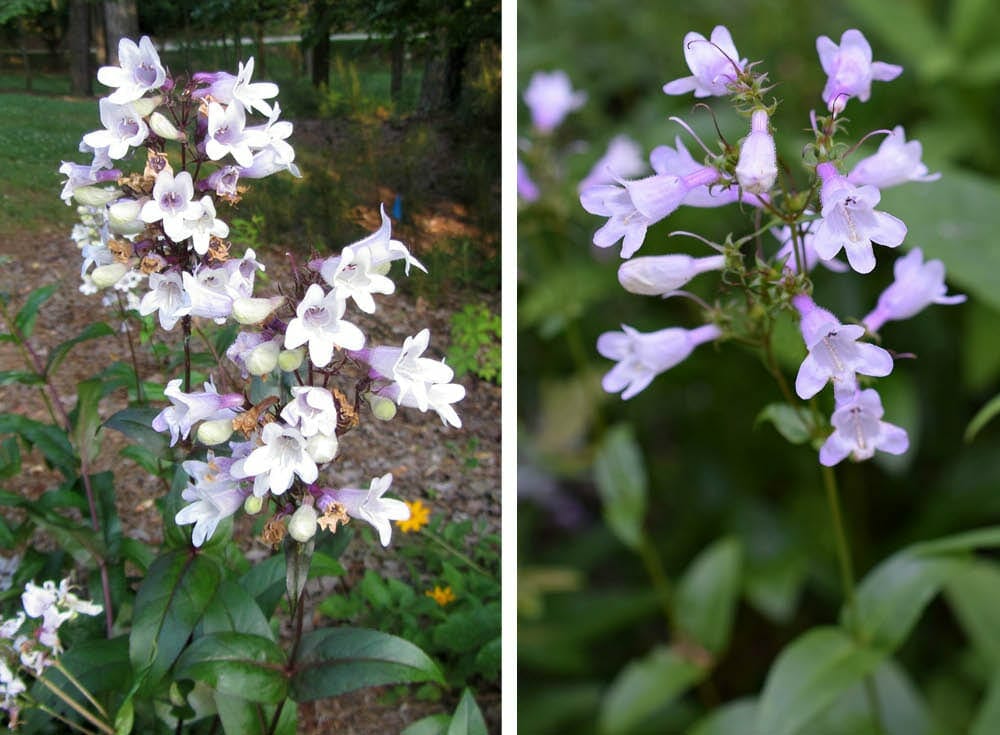I’m gearing up to write an article about beardtongues (Penstemon sp.) for my blog and that usually entails some research about the plants I’m mentioning. One type of research that I do is to check the natural range of the plant. I use the USDA Plants Database site as well as the Biota of North America Program (BONAP) site; both of those offer county level information. And if I’m really unsure after checking those, I check the range maps in Weakley’s Flora (also available in the recent Wildflowers of the Atlantic Southeast book).
When I was researching foxglove beardtongue (Penstemon digitalis), I realized that—as popular as it is in Georgia gardens, including mine—the species does not have county records for native presence. I have an earlier blog that explains how to find the county level data in USDA, so if you’re not familiar with how to do it, check that explanation out here. There are 10 species of Penstemon shown for Georgia; USDA shades Georgia green to indicate that P. digitalis, P. calycosus, and P. laxiflorus might be found here; 7 other species have confirmed records (per USDA).
When we’re choosing plants to put in our Georgia gardens, it’s helpful to know what you’re getting: is it a Georgia native or not? We might choose to use it anyway. Foxglove beardtongue is a southeastern US native and certainly has plenty of relatives here so the likelihood that native insects use and benefit from it is strong. The Xerces Society rates Penstemon in general as a strong support plant for pollinators. In this late spring season, P. digitalis starts blooming in my garden just as P. smallii is finishing, providing a continuation of floral resources for native bumblebees.
When you’re choosing plants for your Georgia garden, consider researching whether they really are a Georgia native (not to mention are they native to your Georgia region, a topic for another issue!). With answers in hand, you can make an informed decision on using it.
[The opinion on preferred use of only species native to Georgia is the author’s own. There is ongoing debate about the merits of using species from adjoining regions under certain circumstances.]
Left: Penstemon digitalis, with natural burgundy-colored variation often called ‘Husker Red.’ Right: Penstemon digitalis, original species color.


